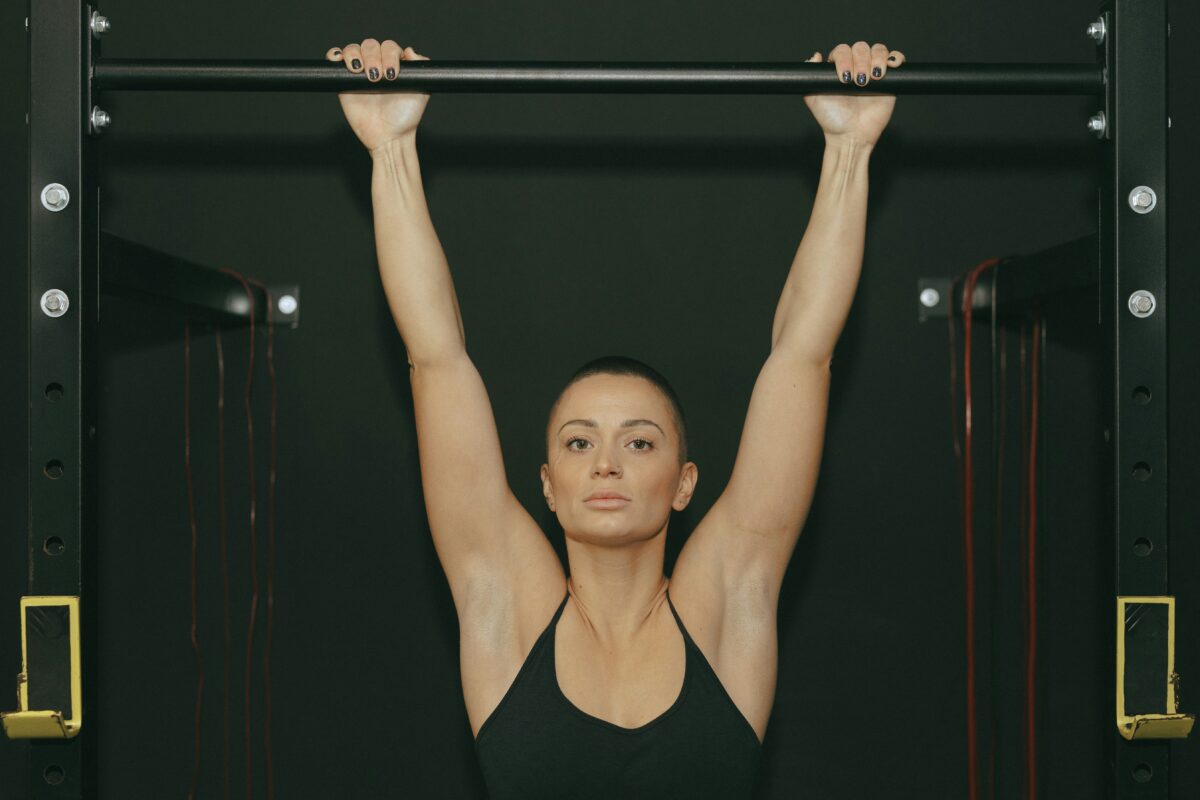EXERCISE AND WORKOUTS
Pull-Ups: Mastering Upper Body Strength
Pull-ups are renowned for their ability to develop upper body strength and muscular endurance. This challenging bodyweight exercise targets multiple muscle groups, primarily the back, shoulders, and arms, making it an excellent choice for anyone looking to build upper body strength and definition. Whether you’re a beginner or seasoned athlete, mastering pull-ups can significantly enhance your overall fitness level and contribute to a well-rounded workout routine.
Benefits of Pull-Ups
- Upper Body Muscular Development: Pull-ups primarily target the latissimus dorsi (lats), which are the large muscles of the back responsible for pulling motions. They also engage the biceps, forearms, and shoulder muscles (deltoids), promoting balanced upper body strength development.
- Core Engagement: Performing pull-ups requires core stabilization to maintain proper form and control throughout the movement. This engagement helps strengthen the abdominal muscles and improve overall core stability.
- Functional Strength: Pull-ups mimic natural pulling movements that are essential for daily activities and sports performance. Building strength in these functional movements can improve overall physical capability and reduce the risk of injury.
- Versatility and Accessibility: Pull-ups can be performed using a variety of equipment, including pull-up bars, rings, or even sturdy tree branches. They are a versatile exercise that can be adapted to different fitness levels and goals.
How to Perform Pull-Ups
- Grip: Start by gripping the bar with your palms facing away (pronated grip) and hands slightly wider than shoulder-width apart. Alternatively, you can use a chin-up grip (palms facing towards you) or a neutral grip (palms facing each other), depending on your preference and comfort level.
- Positioning: Hang from the bar with your arms fully extended and shoulders relaxed. Engage your core muscles to maintain stability throughout the exercise.
- Execution:
- Pull your body upward by bending your elbows and pulling your chest towards the bar.
- Focus on engaging the back muscles to initiate the movement rather than relying solely on arm strength.
- Aim to bring your chin above the bar while maintaining control and avoiding excessive swinging or kipping.
- Lower yourself back down to the starting position in a controlled manner, fully extending your arms without locking the elbows.
- Variations and Progressions:
- Assisted Pull-Ups: Use resistance bands or an assisted pull-up machine to reduce the weight lifted until you can perform full pull-ups independently.
- Weighted Pull-Ups: Increase the intensity by attaching weights (such as a weight belt or weighted vest) to your body.
- Wide-Grip, Close-Grip, or Neutral Grip: Vary your grip width and hand position to target different muscle groups and challenge yourself in new ways.
Incorporating Pull-Ups Into Your Workout Routine
- Frequency: Include pull-ups in your workout routine 2-3 times per week, allowing sufficient rest between sessions to promote muscle recovery and growth.
- Progressive Overload: Gradually increase the number of repetitions or difficulty (such as adding weight) as your strength improves to continue challenging your muscles.
- Warm-Up and Cool-Down: Prioritize a dynamic warm-up to prepare your upper body muscles for the demands of pull-ups. After your workout, stretch the back, shoulders, and arms to improve flexibility and reduce muscle soreness.
Conclusion
Pull-ups are a fundamental exercise for building upper body strength, enhancing muscular endurance, and improving overall fitness. Whether you’re aiming to increase muscle mass, improve functional strength, or achieve specific fitness goals, mastering pull-ups can provide significant benefits. By practicing proper form, progressively challenging yourself, and incorporating pull-ups into a well-rounded workout routine, you can effectively strengthen your upper body and elevate your fitness journey to new heights.

